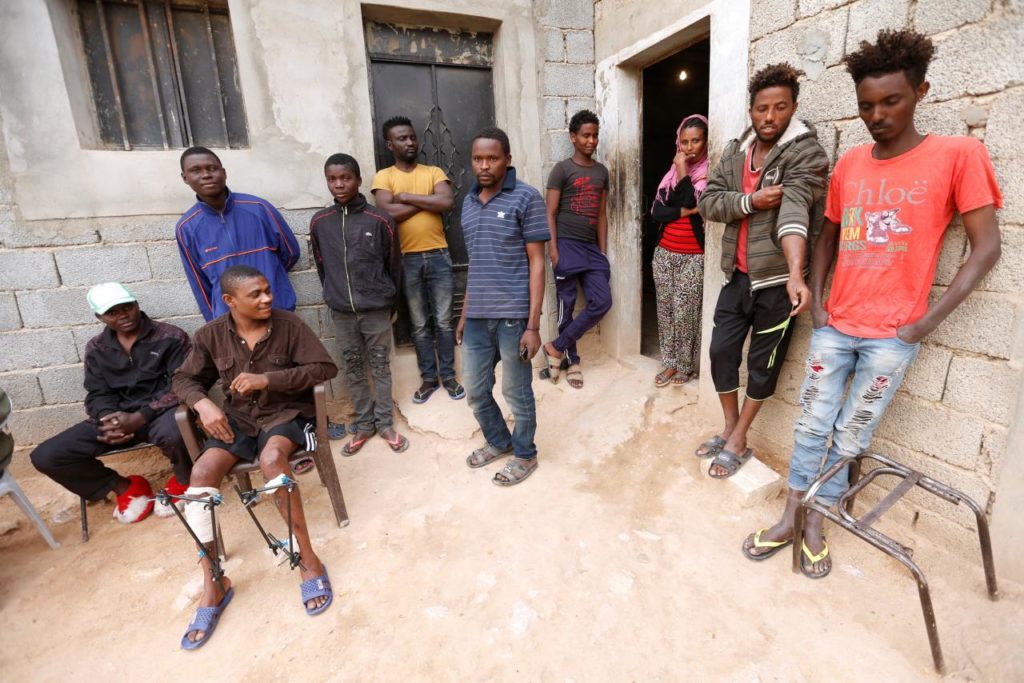Suffering for migrants in Libya ‘worse’ since fall-off in sea crossings


By ![]()
Conditions for migrants already suffering severe abuse in Libya have deteriorated further since a European-backed push to stop boat departures led to a sharp drop in the number of crossings to Italy, community representatives say.
Migrants are being trapped for longer by armed groups that are trying to extort more money from them through torture, said two volunteers who work with migrant communities in the capital, Tripoli.
Departures from Libya accelerated rapidly in 2014 as armed conflict spread, with more than 600,000 crossing the central Mediterranean in the past four years.
But the number of mainly sub-Saharan African migrants reaching Italy has fallen sharply since last July, when a major smuggling group in the Libyan coastal city of Sabratha struck a deal to halt departures under Italian pressure and was then forced out in clashes.
Libya’s EU-backed coastguard has also returned more migrants to Libya after intercepting them at sea.
So far this year, just over 6,400 migrants have crossed from Libya to Italy, a drop of more than 80 percent compared to the same period last year, according to Italian interior ministry data.
For those inside Libya the situation is “unbearable”, said Osman, a Sudanese community representative in Tripoli.
“Before, it was possible that they took money and then left (the migrants. Now they take the money and then torture them with fire, with electricity.”
“The torture has increased. The sea route is shut … if you can’t travel there’s more torture.”
After losing secure camps on the coast where they used to hold migrants before sending them to sea, smugglers are operating further inland, particularly in desert areas around Bani Walid, about 145km (90 miles) southeast of Tripoli, said Khadija, an Eritrean long-term resident of Tripoli who volunteers to help African migrants.
GANGS
Like Osman, she asked only to be identified by her first name. Both were speaking at a community center in Tripoli run by the U.N. refugee agency, UNHCR.
“They are gangs and (the migrants) are delivered from one gang to another. I take my share then you receive the migrant and take your share, and so on,” Khadija said, adding that they are asking for more money than before.
The business is largely run by Libyan and east African smugglers, she said. Pictures or videos of torture are sent to families to pressure them into making money transfers from home countries.

Since the clashes in Sabratha last September many migrants who were held in government-run detention centers have been repatriated by the International Organization for Migration (IOM), or through bilateral flights.
UNHCR has also begun resettling small numbers of refugees and evacuating others through Niger, though the Niger evacuations have been suspended because of delays in resettlement to European countries.
But hundreds of thousands of other migrants reside openly in Libya or are held by smuggling networks or for forced labor, often in dire conditions.
Aid workers say the health of migrants passing through the Bani Walid area has deteriorated, including cases of malnutrition and active tuberculosis.
A safe house in Bani Walid that takes in migrants who are so weakened from illness or abuse that they are abandoned by smugglers, has received more than 3,000 migrants since it was set up 14 months ago.
On a recent Sunday, about a dozen sub-Saharan African migrants were sitting or squatting in a courtyard, some with serious injuries from their journeys or from smuggler abuse.
Youssef, a 24-year-old from Senegal staying at the shelter, said he had been held for three months in a hidden prison outside Bani Walid before his parents managed to raise $1,500 to get him released.
“We were beaten, given electric shocks, we didn’t have anything to eat,” he said. “There were people who died in there.”